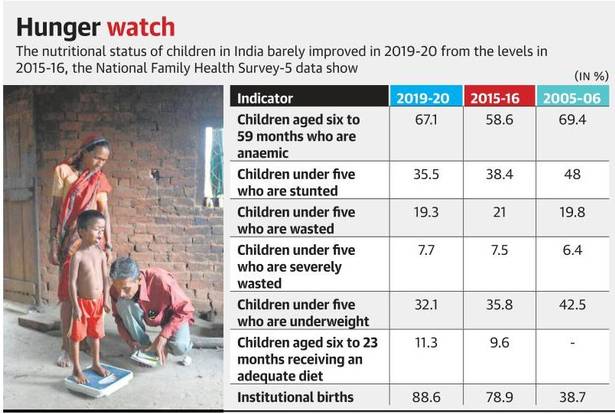7667766266
enquiry@shankarias.in
Why in news?
The findings of Phase-II of the 2019-21 National Family Health Survey (NFHS-5) was released by the Union Ministry of Health and Family Welfare.
TFR is the average number of children born to a woman during her lifetime whereas Replacement Fertility Rate is the level of fertility at which a population exactly replaces itself from one generation to the next.
|
Child Nutrition indicators |
All-India level data |
|
Stunting (low height-for-age) |
Declined from 38% to 36% |
|
Wasting (low weight-for-height) |
Declined from 21% to 19% |
|
Underweight (low weight-for-age) |
Declined from 36% to 32% |
IMR is the number of infants who die before reaching the age of one year, per 1,000 live births.

References